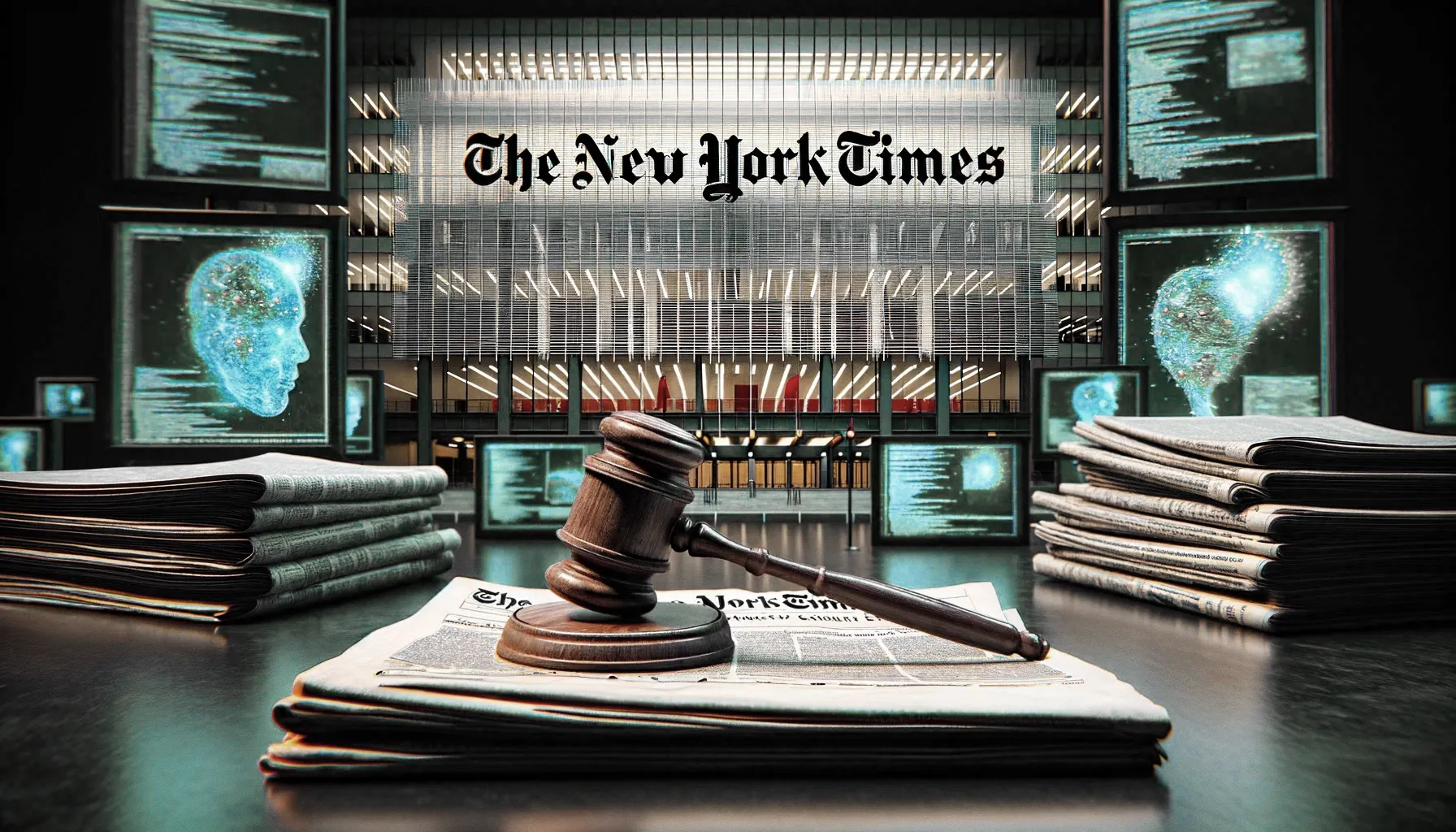Introduction
OpenAI, the renowned artificial intelligence research laboratory, has recently found itself at the center of a legal battle. The New York Times has filed a lawsuit against OpenAI, claiming that the organization engaged in the “regurgitation” of content. OpenAI, however, has responded to the allegations, stating that this is merely a “rare bug” in their system. In this article, we will delve deeper into the details of this lawsuit, examining OpenAI’s response and the implications it may have on the future of AI-generated content.
The New York Times Lawsuit
The New York Times, a prominent news organization, filed a lawsuit against OpenAI, accusing the research lab of “regurgitating” content without proper attribution. According to the complaint, OpenAI’s language model, known as GPT-3, was utilized to generate articles that closely resembled those published by The New York Times. The lawsuit alleges that OpenAI’s actions violate copyright laws and undermine the integrity of the journalism industry.
OpenAI’s Response

OpenAI has swiftly responded to the lawsuit, asserting that the “regurgitation” of content is a result of a “rare bug” in their system. The organization acknowledges that their language model may occasionally produce outputs that resemble existing articles, but they emphasize that this is not intentional. OpenAI maintains that they have taken extensive measures to ensure the responsible use of their AI technologies and that they are committed to addressing any issues that arise.
The Implications for AI-Generated Content
This lawsuit brings to light the challenges and controversies surrounding AI-generated content. While AI has the potential to revolutionize various industries, including journalism, it also raises questions about intellectual property, plagiarism, and the ethical use of AI technologies. The outcome of this lawsuit could set a precedent for the regulation and accountability of AI-generated content in the future.
The Role of OpenAI in AI Development
OpenAI, founded by Elon Musk and others, has been at the forefront of AI research and development for years. The organization has made significant contributions to the field and has been responsible for the creation of advanced language models like GPT-3. OpenAI’s mission is to ensure that artificial general intelligence (AGI) benefits all of humanity, and they have been actively exploring the potential applications and implications of AI in various domains.
Understanding GPT-3

GPT-3, or Generative Pre-trained Transformer 3, is one of OpenAI’s most notable achievements. It is a powerful language model that has been trained on a vast amount of text data, enabling it to generate human-like text. GPT-3 has been praised for its ability to produce coherent and contextually relevant responses, making it a valuable tool in fields such as content creation, customer service, and language translation.
Challenges in AI Content Generation
As AI technologies advance, so do the challenges associated with AI-generated content. One of the main issues is the potential for bias and misinformation. AI models like GPT-3 learn from the data they are trained on, which means that if the training data contains biased or inaccurate information, it may be reflected in the generated content. Ensuring the ethical use of AI-generated content and mitigating these risks is a complex task that requires ongoing research and development.
The Importance of Attribution and Plagiarism
Attribution and plagiarism are crucial considerations in the realm of AI-generated content. When AI systems generate content that resembles existing works, it is essential to provide proper attribution to the original sources. Failure to do so can lead to copyright infringement and undermine the integrity of the content creation process. OpenAI’s response to the New York Times lawsuit highlights the need for robust systems that can accurately attribute sources and avoid potential legal issues.
Balancing Creativity and Originality
The challenge for AI systems like GPT-3 lies in striking a balance between creativity and originality. While the model has the capacity to generate coherent and contextually relevant text, it must also ensure that the content it produces is unique and does not resemble existing works. OpenAI, along with other organizations working in the field of AI, is constantly striving to improve the system’s ability to generate original and innovative content.
The Future of AI-Generated Content

Despite the challenges and controversies surrounding AI-generated content, the future holds immense potential. AI technologies like GPT-3 can augment human creativity and productivity, enabling individuals and organizations to produce high-quality content more efficiently. As advancements are made in the field, it is crucial to establish guidelines and regulations that govern the responsible use of AI-generated content, ensuring that it complements human ingenuity rather than replacing it.
Conclusion
The New York Times lawsuit against OpenAI has sparked important discussions about the responsible use of AI-generated content. OpenAI’s response, acknowledging the existence of a “rare bug,” underscores the complexity of developing AI systems that can generate original and unique content. As AI technologies continue to advance, it is vital to address the challenges associated with attribution, plagiarism, and the ethical use of AI-generated content. By striking a balance between creativity, originality, and responsible use, AI has the potential to revolutionize content creation while upholding the values of integrity and innovation.
